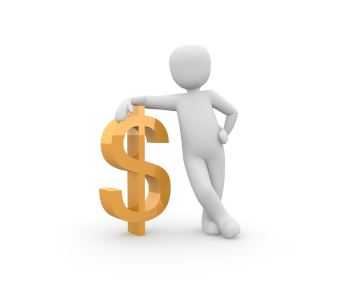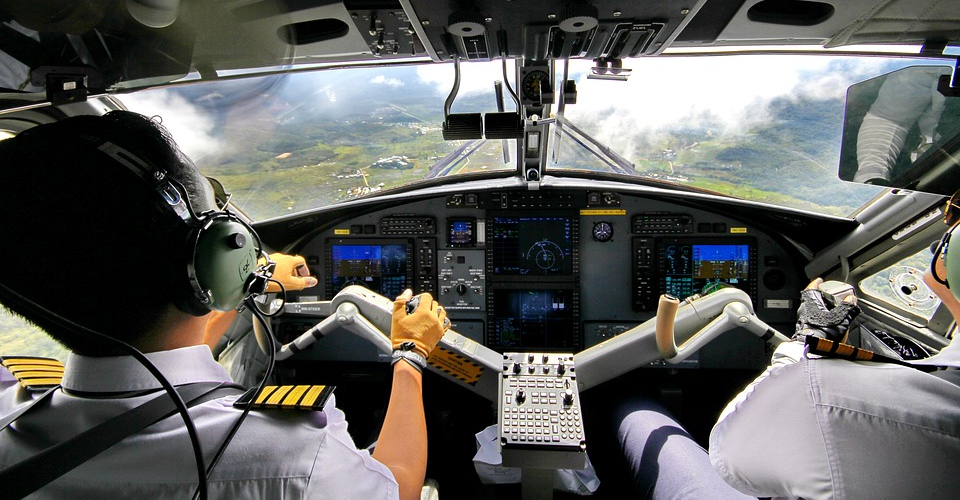How Much do Pilot Lessons Cost?
If you’ve ever considered becoming a pilot, then you probably know that it’s going to be very demanding both technically and physically. However, have you given a thought about how much cash you are going to spend? It’s certainly not going to be cheap, so you’d best be prepared to pinch a few pennies here and there. No worries, though, as a pilot license is well worth the investment.
In case you want to know how much you should expect to spend just on your piloting lessons, then we’ve prepared this handy guide for you. Take note that different piloting schools and instructors may charge different rates, so this guide is by no means exact.
What kind of license are you going for?
Before you even start taking pilot lessons, you need to decide on the type of pilot license you want to earn. This is important because it has a huge effect on how much you’ll end up spending on the piloting lessons. Each type of license requires a different number of flight hours, which means that more advanced pilot licenses will inevitably cost you more.
Below is a summary of the types of pilot licenses and the requisite number of flight hours each type:
| Type of Pilot License | Number of flight hours needed |
|---|---|
| Sport/recreational pilot license | 20 hours |
| Private pilot license | 40 to 60 hours |
| Commercial pilot license | 250 hours |
| Airline transport pilot license | 1500 hours |
Take note that there may be flight restrictions specific to the type of pilot license that you can have. For instance, a pilot with a recreational license is only allowed to fly an aircraft at daytime and with good visibility. Both sport and private pilots are forbidden from getting paid for their services, whether it’s for carrying passengers or transporting cargo.
Moreover, the more advanced pilot licenses, starting from the commercial pilot license, requires you to have a private pilot license first and to log a minimum number of flight hours as a licensed pilot. An airline transport pilot (ATP) will also need to have undergone ATP training on top of logging more than 1500 hours as a commercial pilot.
Breaking down the costs
To better understand where your money will go to when you take piloting lessons, let’s break down the expenses into three categories:
1. Instructor’s hourly fees

Certified Flight Instructors (CFI) charge by the hour, and may charge different rates for classroom lectures, briefing and debriefing, flight simulator sessions (if needed), and actually being in the cockpit with your during flight exercises. Thus, we’ll need to add a premium on top of the number of flight hours you’ll be needing – about 20% more.
Be sure to ask your CFI how much they charge for these different phases of instruction. For this article, we can safely assume an average hourly rate of $50.
Flight schools often offer a special training course for those who wish to become licensed commercial pilots. Signing up to such a training course usually costs around $6000. If you’re going for an ATP license (which means you already have a private license), then you’ll have to go through a special ATP certification course which costs around $5000.
2. Airplane rental fees
By far the most expensive part of taking up pilot lessons, you will need to pay an hourly rental fee for the airplane you will be using to log your flight hours. Most facilities will offer you two types of rates: a wet rate which includes both the rental fee for the plane and the cost of fuel, and a dry rate which only includes the rental fee. In any case, only the period when the engine of the plane was running is typically considered in determining the total rental time that needs to be paid.
Airplane rental rates can vary from one state to another, or even across different flight schools in a single state. You may also be quoted different rates according to the type of airplane, the age of the plane, or how many hours you intend to use it.
Based on data from several flight schools, an average hourly rate of $110 seems reasonable. Although these rates can go as high as $170 or as low as $80, we shall just consider the average rate moving forward.
3. Supplies and other expenses
You’re also going to need to buy books and other training materials from the flight school you signed up to. Expect to pay $500 for those. You will also need to buy your own flight headset which retails for around $200. As with any flight activity, getting insurance is always a good idea, and this should cost you another $100.
Summing everything up
Taking the average values we set, here is a brief summary of how much you should expect in training expenses to earn the appropriate pilot license:
| Type of Pilot License | Estimated training cost |
|---|---|
| Sport/recreational pilot license | $5000 |
| Private pilot license | $12000 |
| Commercial pilot license | $18000 |
| Airline transport pilot license | $17000 |
Other costs to consider
Take note that the costs we have summarized above are only for the piloting lessons. If you want to earn either a commercial or ATP license, you’ll need to have logged the minimum number of flight hours as a licensed private pilot. This could take you several months to a few years and end up costing you so much more if you need to rent an airplane.
You will also need to pay testing fees for the license, and these fees also vary from one license type to another. Pilot certification tests are divided into two parts – written and practical – and you typically have to pay a much higher fee for the practical test since an examiner will be joining you in the cockpit. Testing fees can vary from one examiner to another, but you can expect to spend an additional $500 to $600 to take a certification test.
Tips on reducing your expenses
It’s easy to get intimated from reaching for your aspiration to be a licensed pilot when you look at the expenses. After all, $5000 is not a small amount, especially considering that it’s what you will need to spend for the most basic pilot license. However, there are a few ways to cut small corners here and there. Here are some of the best tips we’ve gathered from the flying community:
1. Join a flying club
There are various nationwide flying clubs that you can join, and they often organize learning sessions for both beginners and advanced pilots. A huge advantage of being a member of the flying club is that they might have tie-ups with aircraft facilities which will allow you to rent airplanes at a discount.
2. Book your airplane rental in advance
Many airplane facilities also offer discounts on rental fees if you can schedule them way ahead of time AND pay ahead. Start asking around in your local area for facilities that offer such deals.
3. Self-study
The thing about piloting lessons is that the faster you learn, the less time you’ll need to spend doing practice flights. Don’t underestimate the power of doing your homework – read flight manuals, watch instructional videos, and try to imagine in your head how you can turn that knowledge into skill. With just some regular mental rehearsal, you might be able to impress your flight instruction on your next session.
4. Don’t take long breaks
Repetition is an important part of learning, and taking long breaks over the course of your piloting lessons may slow down your learning process. Plan ahead to make sure that you can fit in your piloting lessons with your school or work schedule. The best thing would be to finish the lessons as quickly as possible and take the certification test right away.
5. Invest in a top-shelf flight simulation game
A top of the line flight simulator can cost a few hundred dollars, but it’s well worth the investment for the mechanical practice and situational awareness exercise that it can give you without having to spend for airplane rental. If NASA astronauts still use flight simulators for practice, then why shouldn’t you?
6. Look for scholarships and financial grants
Depending on your qualifications or educational background, you might be eligible to be granted financial support for your piloting lessons. For instance, the Professional Aviation Maintenance Association (PAMA) grants 30 individuals with $1000 scholarships on the basis of educational performance and work experience. The Society of Women Engineers also grants scholarships for women or minority students who sign up for aerospace programs, among others.
Final thoughts
Applying for a pilot license is a huge undertaking, no matter what type of license you are aiming for. Not only does it take a lot of work, but it can also be very expensive. We hope that this article helps you in preparing for your piloting lessons – it’s going to cost a lot, so make sure that you finish the lessons and that you earn your pilot license as soon as you can.

